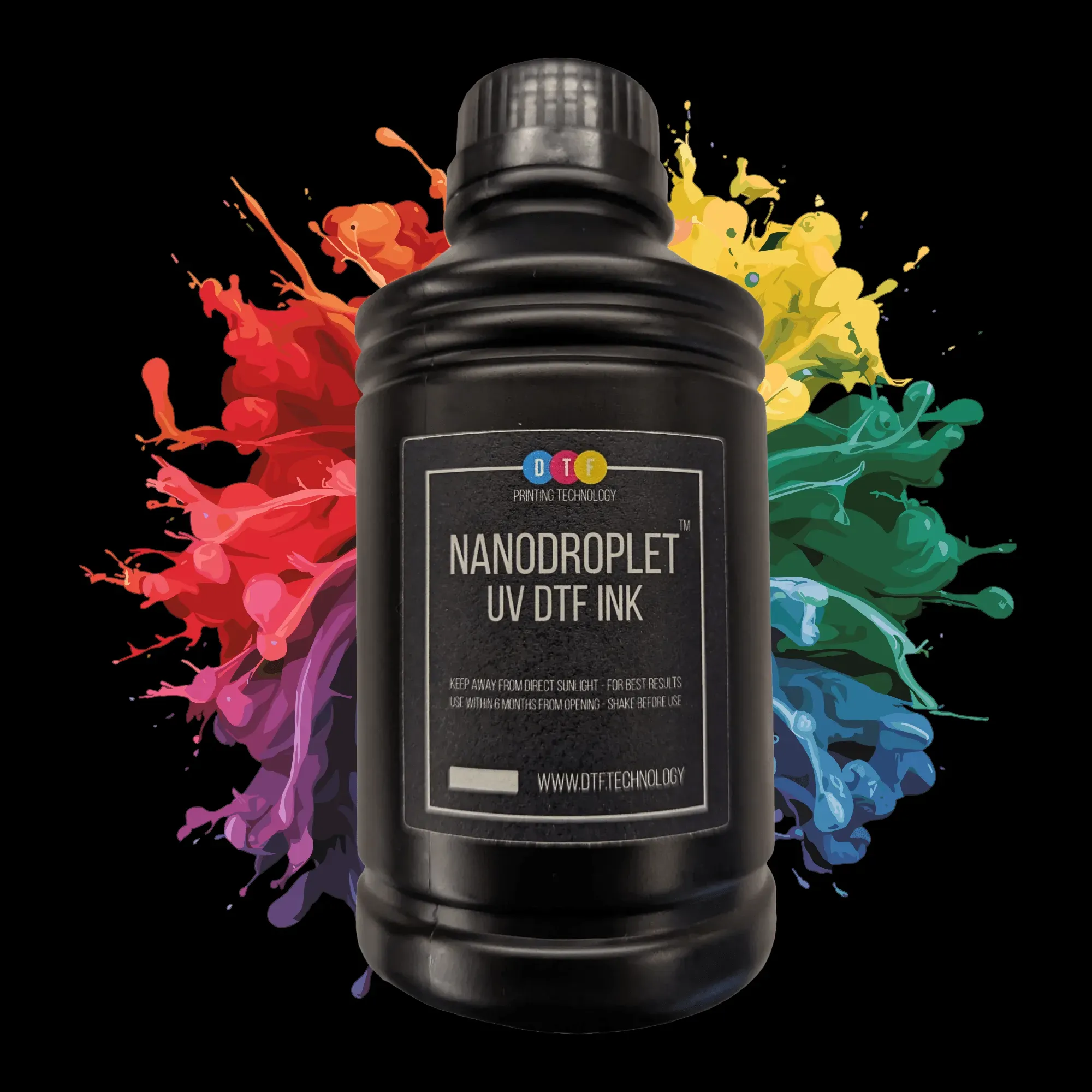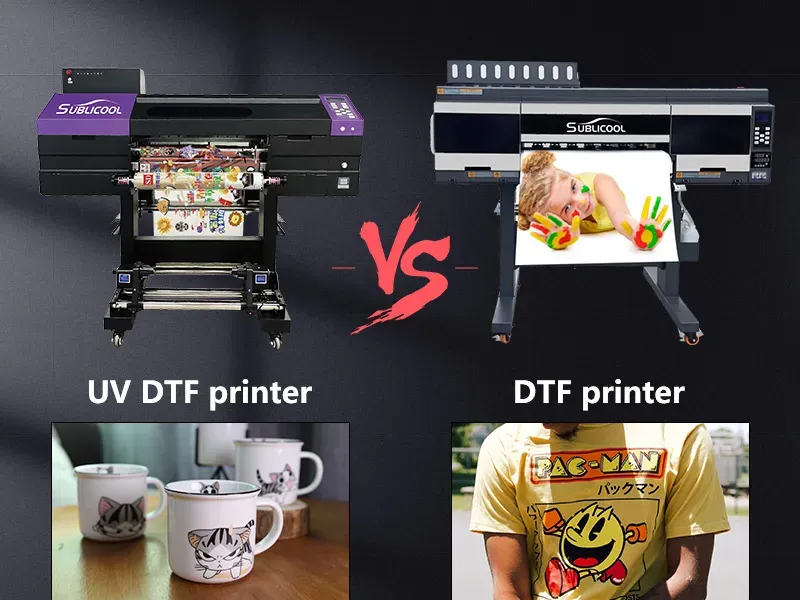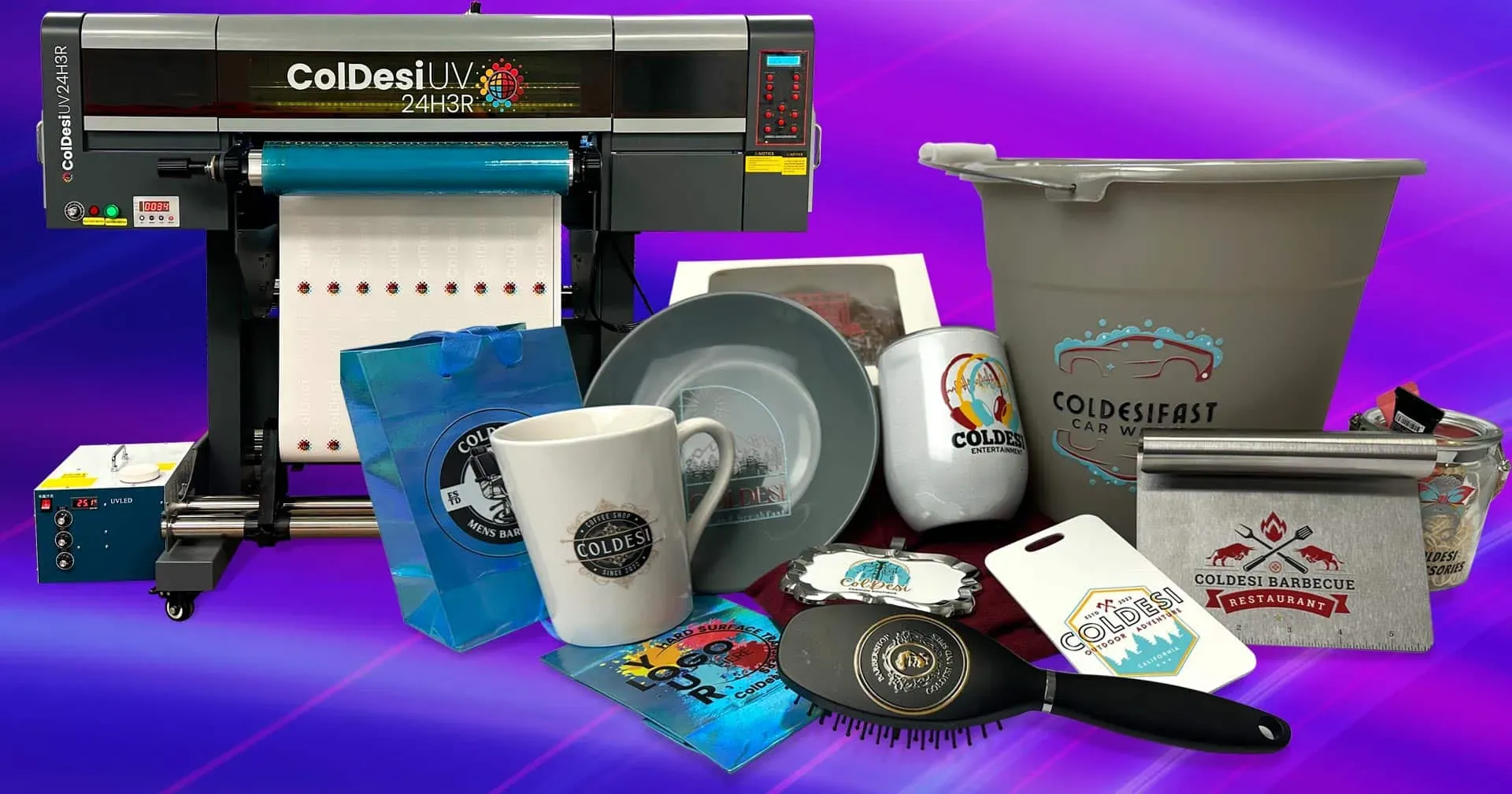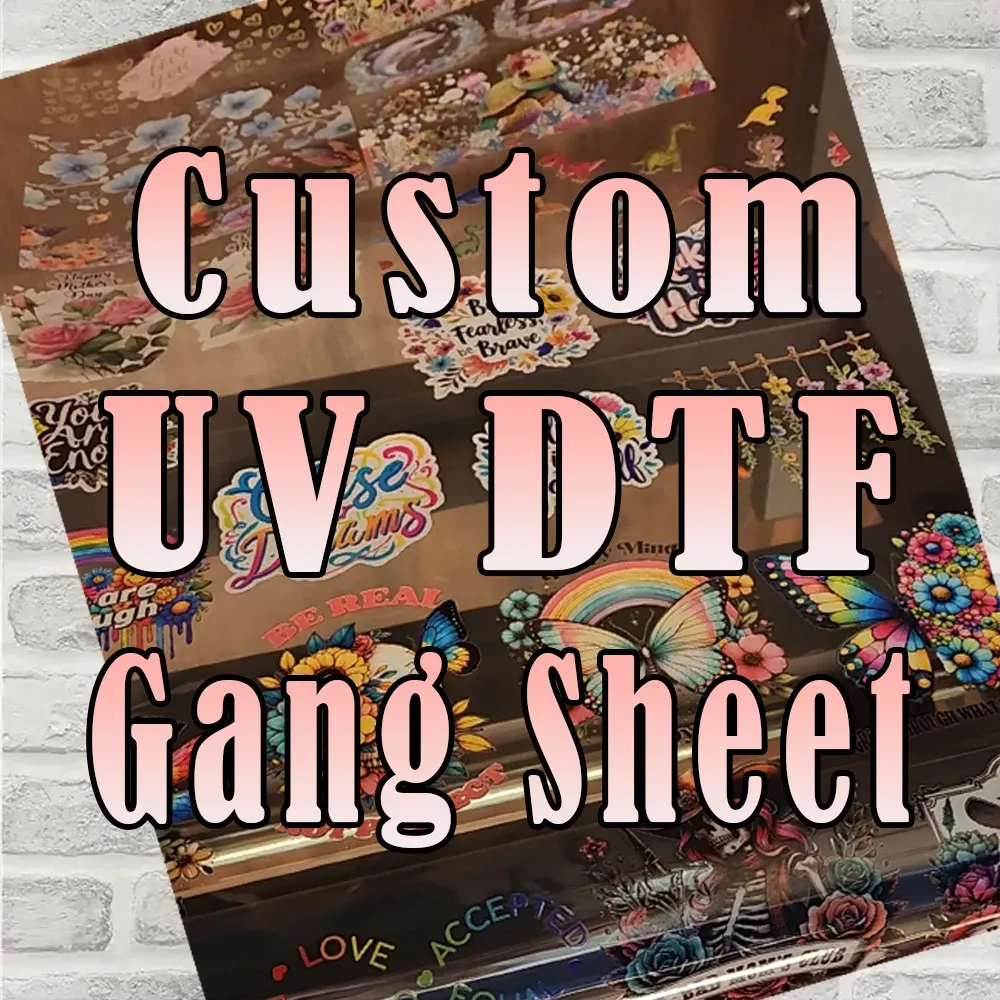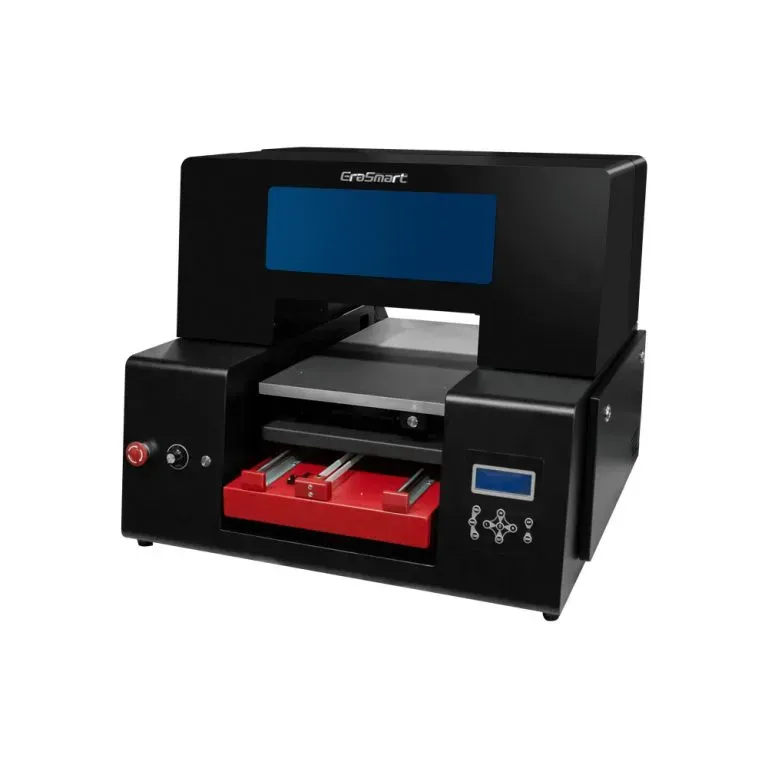UV DTF Technology: Innovative Design Ideas for the Future
UV DTF Technology, or Ultraviolet Direct to Film, has revolutionized the printing landscape, offering unprecedented opportunities for businesses and creators alike. This cutting-edge technology utilizes UV inks combined with innovative transfer techniques, allowing for rich, vibrant images to be printed on an impressive range of materials. As companies increasingly prioritize sustainable design, UV DTF stands out for its eco-friendly characteristics, making it a preferred choice in various industries. The versatility of this technology also enables rapid prototyping and custom packaging solutions that cater to modern market demands. In this article, we delve into the innovative applications of UV DTF Technology, exploring how it enhances interactivity in design while supporting sustainable practices.
Ultraviolet Direct to Film printing, often referred to as UV DTF, represents a fusion of traditional and digital printing methods, ushering in a new era of design possibilities. This advanced printing technique leverages UV light to cure inks instantly, resulting in durable and vivid prints across numerous surfaces, from textiles to unconventional materials like wood and glass. With its emphasis on sustainable design and reduced environmental impact, UV DTF aligns perfectly with the growing demand for eco-conscious printing solutions. Moreover, its capabilities in rapid prototyping empower brands to quickly tailor their offerings, ensuring they remain competitive in a fast-evolving marketplace. Our exploration of this technology will reveal the transformative effects of UV DTF on custom packaging, interactive design, and more.
Exploring the Benefits of UV DTF Technology
UV DTF technology offers distinct advantages over traditional printing methods, particularly in terms of versatility and durability. By utilizing ultraviolet light for curing the inks, it ensures that printed designs are not only vibrant but also resistant to scratches and fading. This makes UV DTF an ideal choice for products that might be exposed to harsh environments or require long-term durability, such as promotional items and exterior signage. Additionally, the technology facilitates printing on a variety of substrates – from fabrics and plastics to metal and glass, expanding the creative horizons for designers.
Moreover, the color brilliance achieved through UV DTF technology is unparalleled. It allows for a wider color gamut, leading to richer and more dynamic prints. This capability is particularly beneficial for brands looking to make a strong visual impact in their marketing materials or product packaging. With UV DTF, companies can push the boundaries of creativity, producing uniquely designed items that stand out in a saturated market. Overall, the benefits of UV DTF technology make it an attractive option for businesses aiming for high-quality, innovative designs.
Sustainable Design through UV DTF Printing
Sustainability is a pressing concern in the modern design landscape, and UV DTF technology offers an eco-friendly alternative to traditional printing methods. Unlike solvent-based inks that contain harmful volatile organic compounds (VOCs), UV inks used in DTF printing emit significantly fewer pollutants. This reduction in harmful emissions aligns with global efforts to create a cleaner environment, making it a responsible choice for companies looking to enhance their sustainability practices.
In addition to reduced emissions, UV DTF technology minimizes waste through efficient printing processes. Designers can create intricate designs and samples without the need for excessive materials, reducing the environmental impact often associated with printing. As brands increasingly adopt sustainable design principles, utilizing UV DTF technology not only meets consumer demand for eco-conscious products but also promotes a brand image built on responsibility and innovation.
Rapid Prototyping with UV DTF Technology
The fast-paced nature of the modern market necessitates rapid prototyping, a niche where UV DTF technology excels. It allows designers to quickly bring concepts to life, enabling them to create customized products that meet the evolving preferences of consumers. With the ability to print on a multitude of materials and deliver impeccable graphic detail, this technology is vital for sectors like fashion and personalized merchandise, where speed and uniqueness are crucial.
For instance, fashion designers leveraging UV DTF can swiftly produce limited edition pieces that reflect current trends, allowing for a more agile response to market demands. The same goes for promotional products that can be customized in real-time to cater to specific campaigns or customer requests. This adaptability not only streamlines product development but also fosters a culture of innovation as businesses can continuously test and refine their offerings.
Innovative Custom Packaging Solutions
Custom packaging is being revolutionized by UV DTF technology, enabling brands to create visually stunning and unique packaging solutions. The ability to print directly on unconventional materials, such as textured surfaces and recycled substrates, allows for the development of eye-catching designs that resonate with eco-conscious consumers. This level of creativity stands out in a crowded marketplace, giving products a definitive edge that enhances visibility and consumer engagement.
Additionally, UV DTF facilitates the incorporation of brand elements into packaging seamlessly. With high-quality printed graphics, companies can convey their brand story effectively, making their products more appealing. Such innovations in custom packaging not only enhance aesthetics but also contribute to functional benefits, such as durability and product protection, exemplifying how UV DTF can play a pivotal role in a brand’s marketing strategy.
Enhancing Interactivity in Design
Interactivity is a game-changer in the design world, and UV DTF technology aligns perfectly with this trend. Designers can incorporate augmented reality (AR) features into their work, creating an interactive experience for consumers that bridges the digital and physical realms. For example, a simple scan of a printed item might unlock additional content, coupons, or information, adding immense value to the user experience.
This level of engagement not only elevates the consumer’s brand interaction but also fosters a deeper emotional connection. The ability to layer interactive elements onto traditional print designs effectively transforms standard products into dynamic tools that engage customers on multiple levels, appealing particularly to tech-savvy audiences. Thus, UV DTF technology serves as a catalyst for innovative design practices that prioritize consumer engagement.
Artistic Expression with UV DTF Technology
Artists are beginning to embrace UV DTF technology as a means of expanding their creative boundaries. The capacity to print directly on various substrates opens new avenues for artistic expression, allowing for the incorporation of mixed media into artworks. Artists can experiment with unconventional materials, such as glass and metal, ultimately broadening their creative toolkit and resulting in unique pieces that were previously challenging to achieve with traditional methods.
Furthermore, the growing demand for personalized signage has also found a new ally in UV DTF technology. Individual consumers and businesses looking for custom designs that reflect their identity can rely on this innovative printing technique to convey their message beautifully. The ability to create bespoke designs ensures that artworks and signage are not only visually impactful but also deeply personal, showcasing the transformative power of UV DTF in the art world.
Frequently Asked Questions
What is UV DTF technology and how does it relate to UV printing?
UV DTF technology, or Direct to Film technology, utilizes UV inks in a process similar to UV printing where ultraviolet light cures the ink as it is printed onto various surfaces. This results in vibrant and durable images that stand out, making it a preferred option for businesses seeking high-quality printing solutions.
How does UV DTF technology contribute to sustainable design practices?
UV DTF technology supports sustainable design by using UV inks that emit lower volatile organic compounds (VOCs) compared to traditional solvent-based inks. This eco-friendly approach allows companies to engage in environmentally responsible printing without compromising the quality and appeal of their designs.
In what industries is UV DTF technology useful for rapid prototyping?
UV DTF technology is particularly beneficial in industries such as fashion, merchandising, and advertising where rapid prototyping is essential. It allows designers to quickly create custom prints and limited edition products, enabling businesses to respond swiftly to changing market trends.
How can UV DTF technology enhance custom packaging solutions?
With UV DTF technology, businesses can print high-quality designs on unconventional materials like glass and wood, leading to unique and visually appealing packaging solutions. This innovation allows brands to differentiate themselves in competitive markets and attract consumer attention effectively.
What role does UV DTF technology play in interactive design?
UV DTF technology facilitates interactive design by enabling the integration of augmented reality (AR) features into printed materials. Marketers can create product packaging with QR codes that link to digital content, enhancing customer engagement and offering an immersive brand experience.
What creative applications are artists exploring with UV DTF technology?
Artists are using UV DTF technology to print their designs on a variety of materials, including canvas, wood, and metal, which allows for innovative mixed-media artworks. Additionally, the technology supports the growing demand for personalized signage, enabling artists to produce custom pieces that resonate with individual consumer aesthetics.
| Key Feature | Description |
|---|---|
| Design Flexibility and Sustainability | UV DTF technology uses eco-friendly UV inks with minimal VOCs, promoting sustainable practices while allowing for intricate designs and reduced waste. |
| Rapid Prototyping and Customization | This technology enables fast, customized design creation, allowing businesses to quickly adapt to market trends and consumer demand. |
| Expansion into New Markets | UV DTF is gaining traction in new sectors like packaging, printing on unconventional materials for innovative designs that enhance product appeal. |
| Interactivity in Design | The technology facilitates the integration of augmented reality features, enhancing consumer engagement through interactive printed products. |
| Art and Signage | Artists and designers are utilizing UV DTF for personalized artworks and custom signage, expanding the artistic possibilities with diverse materials. |
Summary
UV DTF technology is revolutionizing the design landscape by merging innovative printing solutions with sustainable practices. This cutting-edge technology leverages UV inks for vibrant, durable graphics on a wide range of materials, making it an appealing choice for businesses aiming to reduce their environmental impact. As we explore its versatile applications, from customizable fashion pieces to interactive packaging, it becomes clear that UV DTF technology not only enhances aesthetic appeal but also drives market growth. With its ability to allow rapid prototyping and entry into new markets, UV DTF is setting a new standard for creativity in design, paving the way for future innovations across multiple industries.

